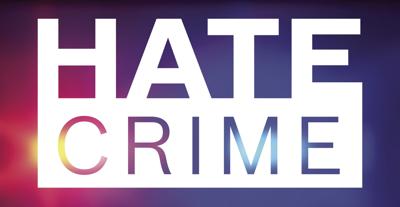“From his crackdown on illegal immigration to his reversal of Obama administration policies on criminal justice and policing, Sessions is methodically reshaping the Justice Department to reflect his nationalist ideology and hard-line views — moves drawing comparatively less public scrutiny than the ongoing investigations into whether the Trump campaign coordinated with the Kremlin.”
Zapotsky and Horwitz said that in an interview with Breitbart News in 2015, then-Sen. Sessions (R-Ala.) spoke favorably of a 1924 law that excluded all immigrants from Asia and set strict caps on others.
“When the numbers reached about this high in 1924, the president and Congress changed the policy and it slowed down immigration significantly,” Sessions said. “We then assimilated through 1965 and created really the solid middle class of America, with assimilated immigrants, and it was good for America.”
According to Zapotsky and Horwitz, Vanita Gupta, the head of the Justice Department’s civil rights division in the Obama administration who now works as chief executive of the Leadership Conference on Civil and Human Rights, said Sessions seems to harbor an “unwillingness to recognize the history of this country is rooted in immigration.”
“On issue after issue, it’s very easy to see what his worldview is of what this country is and who belongs in this country,” she said, adding that his view is “distinctly anti-immigrant.”
Zapotsky and Horwitz write that questions about Sessions’s attitudes toward race and nationality have swirled around him since a Republican-led Senate committee in 1986 rejected his nomination by President Ronald Reagan for a federal judgeship, amid allegations of racism. In January, his confirmation hearing to become attorney general turned bitter when, for the first time, a sitting senator, Cory Booker (D-N.J.), testified against a colleague up for a Cabinet position. Booker said he did so because of Sessions’s record on civil rights.
Sessions ultimately won confirmation on a 52-to-47 vote, and he moved quickly to make the Justice Department his own. Two months into the job, he told the department’s lawyers to review police oversight agreements nationwide, currying favor with officers who often resent the imposition of such pacts but upsetting those who think they are necessary to force change.
Zapotsky and Horwitz also said that Sessions imposed a new charging and sentencing policy that critics on both sides of the aisle have said might disproportionately affect minority communities and hit low-level drug offenders with stiff sentences.
“Allies of Sessions say the policy is driven not by racial animus but by a desire to respond to increasing crime,” write Zapotsky and Horwitz. “The latest FBI crime data, for 2016, showed violent crimes were up 4.1 percent over the previous year and murders were up 8.6 percent — although crime remains at historically low levels. The Bureau of Prisons projects that — because of increased enforcement and prosecution efforts — the inmate population will increase by about 2 percent in fiscal 2018, according to a Justice Department inspector general report.”
Zapotsky and Horwitz wrote that Larry Thompson, who served as deputy attorney general in the George W. Bush administration and is a friend of Sessions, said that although he disagrees with the attorney general’s charging policy, he believes Sessions was “motivated by his belief that taking these violent offenders off the streets is the right way to address the public safety issues.”
According to Zapotsy and Horwitz, Sessions’s moves to empower prosecutors have led to a concerted focus on hate-crimes prosecutions — a point his defenders say undercuts the notion that he is not interested in protecting the rights of minorities or other groups. Prosecutors have brought several such cases since he became attorney general and recently sent an attorney to Iowa to help the state prosecute a man who was charged with killing a gender-fluid 16-year-old high school student last year. The man was convicted of first-degree murder.
But while civil rights leaders praised his action in that case, Kristen Clarke, president and executive director of the national Lawyers’ Committee for Civil Rights Under Law, said that it “stands in stark contrast to his overall efforts” to roll back protections for transgender people.
Shortly after he became attorney general, Sessions revoked federal guidelines put in place by the Obama administration that specified that transgender students have the right to use public school restrooms that match their gender identity. In September, the Justice Department sided in a major upcoming Supreme Court case with a Colorado baker, Jack Phillips, who refused to bake a wedding cake for a same-sex couple because he said it would violate his religious beliefs.
Sessions recently issued 20 principles of guidance to executive-branch agencies about how the government should respect religious freedom, including allowing religious employers to hire only those whose conduct is consistent with their beliefs. About the same time, he reversed a three-year-old Justice Department policy that protected transgender people from workplace discrimination by private employers and state and local governments.
The Justice Department has similarly rolled back Obama administration positions in court cases over voting rights.
In February, the department dropped its stance that Texas intended to discriminate when it passed its law on voter identification. And in August, it sided with Ohio in its effort to purge thousands of people from its rolls for not voting in recent elections — drawing complaints from civil liberties advocates.
At a recent congressional hearing, Sessions said the department would “absolutely, resolutely defend the right of all Americans to vote, including our African American brothers and sisters.”
According to Zapotsky and Horwitz, critics say that Sessions’ record shows otherwise. “We are seeing a federal government that is pulling back from protecting vulnerable communities in every respect,” Clarke said. “That appears to be the pattern that we are seeing with this administration — an unwillingness to use their enforcement powers in ways that can come to the defense of groups who are otherwise powerless and voiceless.”
My opinion? Watching the actions of the feds – and especially the top federal prosecutor for the United States – gives us a litmus test which defines the shape of things to come on a more local level. The reason why it’s important to watch the movements of federal prosecutions is because they impress upon – and persuade – the priorities of state prosecutions.
Let’s see what happens.
Please contact my office if you, a friend or family member are charged with a crime. Hiring an effective and competent defense attorney is the first and best step toward justice.















